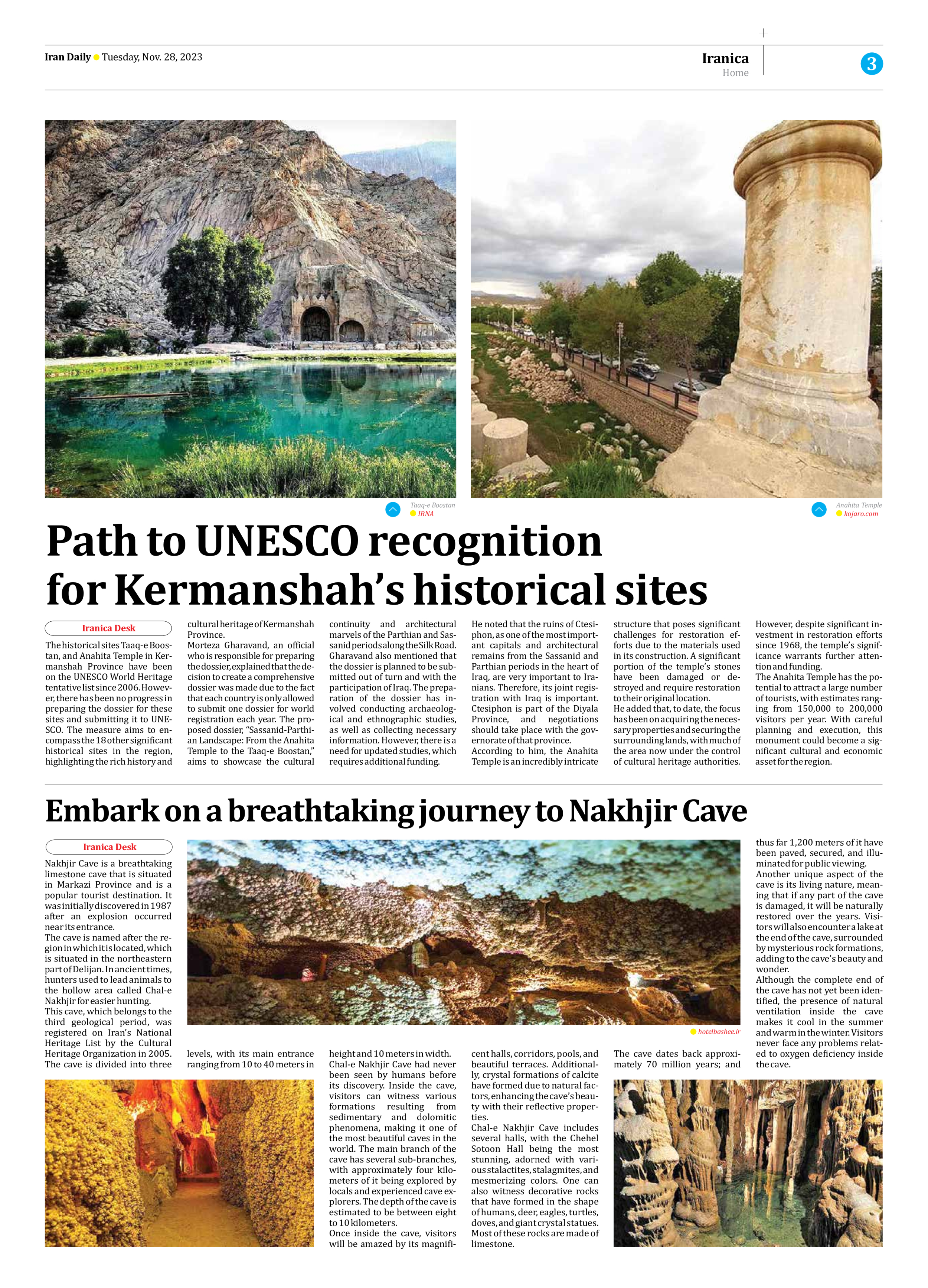
Embark on a breathtaking journey to Nakhjir Cave
Nakhjir Cave is a breathtaking limestone cave that is situated in Markazi Province and is a popular tourist destination. It was initially discovered in 1987 after an explosion occurred near its entrance.
The cave is named after the region in which it is located, which is situated in the northeastern part of Delijan. In ancient times, hunters used to lead animals to the hollow area called Chal-e Nakhjir for easier hunting.
This cave, which belongs to the third geological period, was registered on Iran’s National Heritage List by the Cultural Heritage Organization in 2005. The cave is divided into three levels, with its main entrance ranging from 10 to 40 meters in height and 10 meters in width.
Chal-e Nakhjir Cave had never been seen by humans before its discovery. Inside the cave, visitors can witness various formations resulting from sedimentary and dolomitic phenomena, making it one of the most beautiful caves in the world. The main branch of the cave has several sub-branches, with approximately four kilometers of it being explored by locals and experienced cave explorers. The depth of the cave is estimated to be between eight to 10 kilometers.
Once inside the cave, visitors will be amazed by its magnificent halls, corridors, pools, and beautiful terraces. Additionally, crystal formations of calcite have formed due to natural factors, enhancing the cave’s beauty with their reflective properties.
Chal-e Nakhjir Cave includes several halls, with the Chehel Sotoon Hall being the most stunning, adorned with various stalactites, stalagmites, and mesmerizing colors. One can also witness decorative rocks that have formed in the shape of humans, deer, eagles, turtles, doves, and giant crystal statues. Most of these rocks are made of limestone.
The cave dates back approximately 70 million years; and thus far 1,200 meters of it have been paved, secured, and illuminated for public viewing.
Another unique aspect of the cave is its living nature, meaning that if any part of the cave is damaged, it will be naturally restored over the years. Visitors will also encounter a lake at the end of the cave, surrounded by mysterious rock formations, adding to the cave’s beauty and wonder.
Although the complete end of the cave has not yet been identified, the presence of natural ventilation inside the cave makes it cool in the summer and warm in the winter. Visitors never face any problems related to oxygen deficiency inside the cave.







